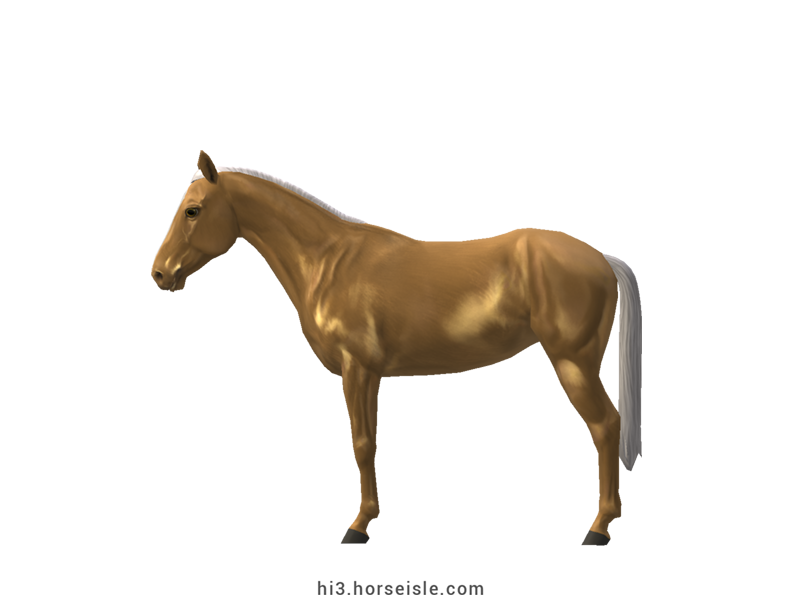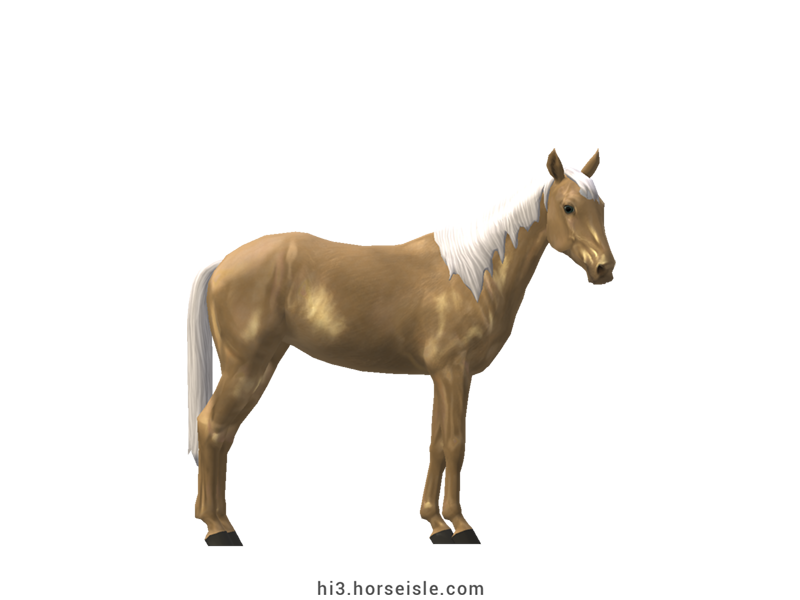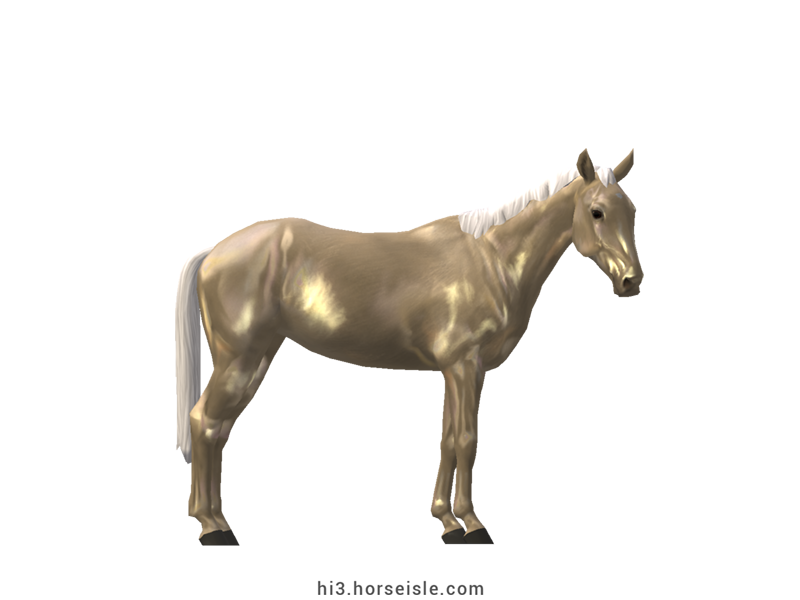Our Massive Real World Equine Reference!
[ INDEX ] Equine Type: Horse Breed: Kinsky (Kin) [ PREV ] [ NEXT ]
From the house to the cavalry:
The Kinsky is named after the House of Kinsky which bred horses since the 13th century. Originally, the horses were used for the House's needs, be it for riding or harness. In 1723, the breeding program of Kinsky horses was officialized in accordance with a royal command, and the horses were bred to serve in the Bohemian cavalry.
Starting from the 1770s, English Thoroughbreds were imported from England to the Kinsky stables and incorporated into the breeding program. This improved the Kinsky's stamina and athleticism, and turned it into a superb sport breed.
Octavio Kinsky and the Kinsky's legendary era:
The 19th century brought with it a new era to the horse-breeding world of the Czech Republic (then known as Bohemia) as a whole, and to the Kinsky in particular. Leading this era was Count Octavio Kinsky who orchestrated several major developments.
First, during the 1830s, he established the Kinsky Stud Farm at east Bohemia, effectively expanding the breeding program of Kinsky horses. In addition, he started the practice of documenting the horse's pedigrees, thus keeping track of both paternal and maternal lines. Today, all Kinsky horses can be traced back to these lines.
Next, in 1836, Count Octavio established the first organized English-style foxhunt in Bohemia, in which Kinsky horses proved their top athleticism. Ten years later, in 1846, he established the first ever English-style steeplechase on Bohemian soil, which was held in a racecourse that he commenced building. Thirty years later, in 1874, he established the Pardubice Grand National which became known as the toughest race for testing a horse's stamina.
The Golden Horse of Bohemia:
These races tested the speed, stamina, and agility of horses at the time, but of the Kinsky in particular. The Kinsky horses didn't disappoint, carrying their riders to victories and proving why they were considered one of the elite sport breeds at the time.
In addition to their glory on the racetrack, Kinsky horses were also famous for their characteristic, glorious, golden-metallic coat which was usually palomino or buckskin in color. They became known as 'the golden horses of Bohemia'.
When Octavio Kinsky passed away in 1896, he was already known as one of the most eminent and accomplished horse breeders ever born. Even after his death, the Kinsky continued doing well and remained popular well into the early 20th century.
Pulling through tough times:
Kinsky horses continued to do well even after the Bohemian monarchy was dissolved following World War I and Czechoslovakia was born. It even survived World War II, during which Czechoslovakia was literally split between Nazi Germany, Hungary, and newly-formed Slovakia. Unlike its shuttered homeland, the Kinksy horse was still doing well.
This changed in 1948, when the reestablished Czechoslovakia became a satellite state of the USSR. The Soviet authorities confiscated the Kinsky Stud along with most of its horses and banned any form of foxhunting events. Despite being left with a small stock, the Kinsky family managed to continue breeding Kinsky horses according to the same standard of stamina and athleticism.
A national treasure:
In 1989, Czechoslovakia was freed from the USSR, and Czechoslovakian breeders were free to resume breeding Kinsky horses as before. In order to protect and promote this breed, which existed only in small numbers in its purebred form, the Czechoslovakian government declared the Kinsky to be a national treasure.
Although Czechoslovakia ceased to exist in 1993 when it was split into Slovakia and Czechia, the Kinsky remained one of Czechia's national treasures.
The Kinsky vs. the Czech Warmblood:
During the 20th century, most Kinsky horses were crossed with other European warmbloods, especially with German sport warmbloods, to create the Czech Warmblood. While this warmblood became popular, the Kinsky started to disappear and was largely absorbed into the Czech Warmblood.
This changed in 2005 with the establishment of the Kinsky studbook as well as breeding rules to regenerate and maintain the original Kinsky. Although the rules allow crossing Thoroughbreds with Kinskies, this is done to a limited extent and only if this promotes the regeneration of the Kinsky. Furthermore, purebreeding is still preferred. This is why in Horse Isle, the Kinsky has a closed studbook.
The Kinsky today:
Today, the Kinsky is still a rare breed although its numbers increase. It is bred primarily in Czechia, including in the Kinsky Stud Farm, but also in the USA and the UK in small numbers. It is bred to excel in Olympic disciplines while maintaining its metallic sheen.
Conformation:
Kinsky horses have a light head with a straight profile, a long neck, prominent withers, a medium-long back, a slightly-sloping croup, and long legs.
The mane and tail are silky, with the tail growing long but the mane is short or medium in length.
Performance metrics:
The following are the: range, average, (SD), and MOE of performance metrics of ordered Kinskies (not bred ones). In rare cases, horses might have metrics outside of the range. Breeders can produce horses that are beyond this range.
Speed: 16.4-18.0, 17.3 (0.3), 0.07.
Sprint: 41-53, 46 (2), 0.47.
Accel: 0.76-0.94, 0.86 (0.03), 0.01.
Decel: 0.70-0.85, 0.78 (0.03), 0.01.
Jump: 5.14-5.39, 5.27 (0.05), 0.01.
Pull: 1.27-2.01, 1.70 (0.14), 0.03.
Turning: 45.01-57.66, 51.66 (3.05), 0.6.
Reverse: 2.4-3.0, 2.7 (0.1), 0.03.
Stamina: 47.69-53.26, 50.57 (1.29), 0.25.
Reaction: 0.79-0.89, 0.85 (0.02), 0.00.
Coats & Height:
Kinsky horses are also called "The Golden Horses of Bohemia" because their coat has a golden, metallic sheen.
Avoid crossing heterozygous metallic Kinskies, as it might lead to a non-metallic foal.
Colors: most Kinskies have a light-colored cream-diluted coat. The colors of bay, dark-bay ('brown'), dun, chestnut, and black exist but are uncommon, with the latter being extremely rare.
Additionals: flaxen, linebacked, rabicano, sooty. The coat is always solid and is on the light side, unless heavily sooty.
Height: Kinsky horses usually stand between 15.3hh and 16.3hh, but the full height range is 15.2hh to 17.2hh.
[ INDEX ] [ PREV ] [ NEXT ]

























